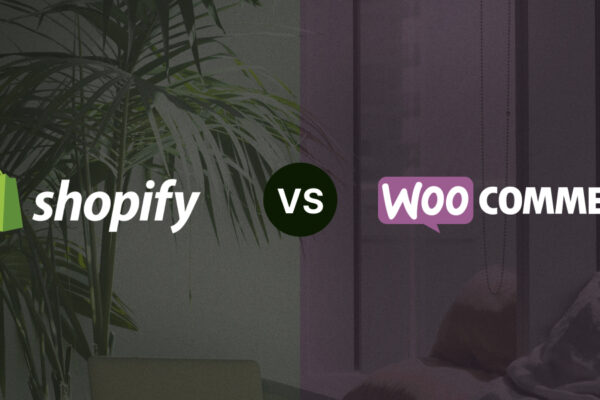Think back to when you were a child, and you counted down the days until summer break. Perhaps you woke up early to see if the admin canceled school due to inclement weather. No matter the reason, we all dreamed about staying at home. Fast forward, and kids across the country don’t have to leave the comfort of their home to attend school. Instead, they enjoy learning from a home environment. Homeschooling, once only a fantasy for wealthy students, is now the reality for many, especially past-pandemic.
The U.S. education market will reach an estimated value of $1.96 trillion in 2025.
These figures include all sectors, including public, private, and homeschool.
As an entrepreneur, you can have a profound effect on the youth of our country. The homeschool niche has grown by leaps and bounds, and parents want the latest and greatest curriculums for their children. There is an ever-growing market for homeschool books, supplies, and tips. If you want to make an impact on the education system, now is your chance.
Meet one homeschooling mom who built a 7-figure business during the pandemic.
Why Is Homeschooling All the Buzz?
Every child deserves a solid education. Going to school isn’t just important; it’s the law in every state. While the majority of students still rely on the public education system, more and more parents are jumping aboard the homeschool train.
In mid-2019, the National Home Education Research Institute reported a total of 2.5 million homeschooled students in the United States. Of course, during the pandemic, we saw a huge surge in homeschooling. Now, 3% to 4% of the school-going population in the US is homeschooled, according to the most recent federal data.
Photo credit: ThinkImpact
Experts speculate the number of students enrolled in a homeschool program will continue to increase at the rate of 2-8 percent each year.
Why is homeschool on-trend? There are many speculations. However, an increase in peer bullying and school violence is the reason why 91% of families choose to homeschool initially. Other parents want to provide their children with an affordable, faith-based curriculum. Some have a special needs child who will not thrive in a traditional school setting.
Understand the Minimum State Requirements
There is a state-mandated curriculum for every public school in the United States. Since the federal government does not oversee the education system, it’s up to each state to determine what students should learn and when.
Before you start marketing your curriculum to eager parents, make sure you meet the requirements of most states. It’s better to teach to the top than the other way around. For example, Texas and Oklahoma have very lenient rules when it comes to homeschooling. However, if a family lives in Pennsylvania, the state requires the student to pass all required standardized testing. Parents also have to file a notarized affidavit with the local superintendent.
Why do these requirements matter for your business? It’s simple—the more kids who can benefit from your products, the more parents who will purchase from you.
What Do Homeschoolers Need?
Parents want the very best for their children. They view homeschooling as a way to provide their kids with the learning opportunities they couldn’t get in public school. However, there is one key difference between the public school system and homeschool—supplies. Even though most parents buy the necessary supplies (pencils, paper, binders) for their kids, when the kids attend a traditional school, they are provided with all the books and learning tools they need.
To keep up with the public schools, parents need to stay one step ahead. They want books and curriculums to prepare their children for the real world. Parents desire helpful tools, including sensory toys, math games, and hands-on science equipment, to challenge young minds. They request organizational materials to monitor progress and keep their child on track. But where can they find all this in one place?

Imagine opening a one-stop-shop for all homeschoolers across the country.
Even if only one percent of students purchased from your storefront, you would have 25,000 customers. With solid marketing, there’s no reason why you couldn’t become the go-to expert in the homeschool circle.
Serve the Next Generation
Too many parents shy away from homeschooling because they don’t know where to begin. Even veteran educators struggle to keep up-to-date with the latest learning materials and supplies. You can enter the industry and provide everything they need in one location.
Each student needs a different curriculum for different years of their journey. For example, the books used by those in grades K-5 will look much different from the advanced studies of a gifted high schooler. However, it’s not always easy to find an approved course.
Consider producing a homeschool curriculum. You can design lesson plans, worksheets, and coursework for each grade. You’ll need to produce textbooks to teach reading, writing, math, social studies, and science. Supplementary books for foreign languages, fine arts, and computer literacy also have a place in this growing niche.
While most parents who homeschool are not rich—many are blue-collar workers—they still want the best for their children. Competitively pricing your courses will ensure they’re accessible for all students. The average family spends about $900 a year per student, according to the HSLDA.
Charging $500 for a full curriculum, including all subjects and worksheets, could earn you impressive revenue. Selling a mere 1,000 copies a year would bring in $500,000. Best of all, most textbooks are evergreen, at least for the short-term. Once published, you won’t have to do anything besides market your already written materials.
Get Someone Else to Write Your Paper
Did you barely pass English Comp 101? How in the world can you manage to write books to teach others how to master grammar?
Even if your writing skills are elementary at best, you can still carve out a spot in this growing niche.
Ghostwriters will become your best friend in the industry. Even if you do have above average writing abilities, you may not have the time to research and write every chapter for each course. Coming up with lesson plans is not an afternoon walk in the park. It can be downright daunting and, frankly, boring.

Instead, source a group of writers who will do all the hard work for you. If you don’t know where to begin, you can always outsource online through a freelancing platform, such as Upwork. All you have to do is present your pitch, and several writers will bid on your proposal. Best of all, you can negotiate a price that fits within your budget. Do remember, you get what you pay for.
Here’s what to do before hiring a writer:
- Agree on a set price, whether per word or hour. The amount you charge may vary depending on the complexity of the work and the experience of the writer.
- Be upfront about retaining ownership of the work. You don’t want your writer to publish the same content elsewhere.
- Clearly state this is a ghostwriting gig, and they won’t have a byline.
- Create a contract and have your writer sign it before beginning any work. You don’t want to face any legal problems down the road.
How many ghostwriters you hire depends on your timeline and finances. But, if you can find experts for each subject, your curriculum will have more merit in the homeschool world. Teachers and professors make some of the best ghostwriters, and they already know what to include for each course.
Books Are So 2010
While many homeschool parents rely on printed textbooks and materials, there is a growing demand for online learning. Some prefer the convenience of web-based courses, while others feel it’s better for the environment.
You can choose to offer products in any format you desire, but providing both a print and online version is the best way to attract a wider audience. If you do choose the virtual model, make sure you offer more than just printed words. Students are visual learners, and they desire an interactive, fully immersive experience.
Consider working with a web designer to make your curriculum internet friendly. Online learning is more popular than ever. It’s not only used for school-aged children, but many corporations also utilize it to train their workers. You should incorporate some of the following learning options for your homeschool courses:

Gamification
Video games are a favorite pastime of most students, so why not turn it into an educational tool? Create lessons that require students to unlock levels and achieve accomplishments before they can move to the next chapter.
Video-based learning
Kids often forget what they read but retain what they see. Consider designing lesson plans that utilize video to reinforce the material. Fun, recurring characters will help students build a lasting relationship with your curriculum.
Mobile learning
We live in an on-the-go world. Instead of making students stay cooped up at home, offering a mobile-based platform will allow them to see the world while they study at the same time.
Education must evolve to keep up the world around us. Homeschool no longer looks like an episode of Little House on the Prairie. Offering cutting-edge curriculums on a multitude of platforms will ensure your content stays relevant for many years to come.
Marketing Is Elementary
Facebook has tons of groups dedicated to homeschooling. While some are small in size, several have a large following, including Homeschool Curriculum Marketplace (85K members), Crossing Over to Homeschooling (30K members), and Montessori Homeschooling (42K members). Reach out to group admins before promoting your materials.

Instagram has several homeschool influencers who regularly post about their personal experiences. Here are a few to consider: Hip Homeschool Moms (27,000 followers), Schoolhomies (6,500 followers), and Teach Them Diligently (16,500 followers). Connecting with popular Instagram accounts is a surefire way to reach a broad audience almost instantly. Consider reaching out to influencers. You could negotiate a joint venture or pay for a sponsored mention.
The Takeaway
Homeschooling isn’t just for those in rural parts of the country. Today, over two million students in grades K-12 learn from home. This large market needs an entrepreneur who will create high-quality curriculums to cover all subjects.
Your homeschool business can include printed text, online learning, or a combination of both.
Parents will pay a reasonable price to purchase the best educational materials for their children. If your curriculum exceeds their expectations, they will continue to repurchase from you every year.
Having an online presence and marketing on social media is a must if you want to stand out from the crowd. Connecting with homeschoolers on Facebook and Instagram is a great place to start. As your business grows, you can expect to gain a lot of new customers through word-of-mouth referrals.
When it comes to education, kids deserve nothing but the best. If the challenge of designing a top-notch curriculum intrigues you, now is the best time to make a name for yourself in the $1.96 trillion education market.












